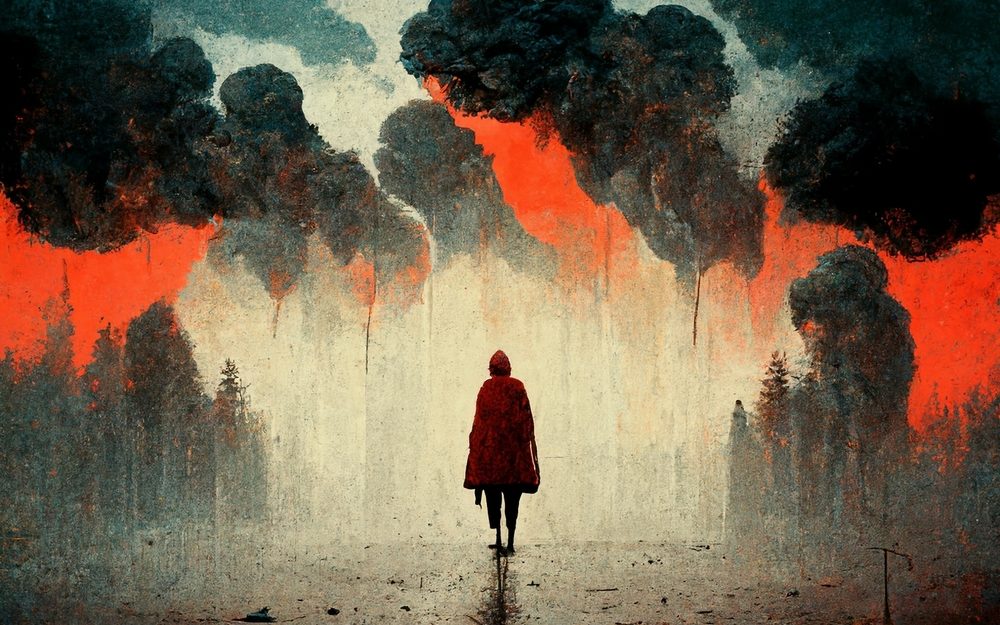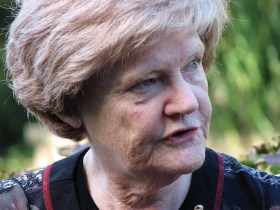It’s not difficult to imagine that the fear around Artificial Intelligence (AI) is an existential one, rather than just something technological as it may have been with cameras or computers. Previously we thought machines could merely replace certain tasks or professions, but now it’s bulldozed into the question: “What if it could replace us, humans?”
When it comes to AI-generated images, the question “but is it art?” has always escaped me – didn’t we sort that out at least 50, if not 100, years ago, from Dada to Conceptual, Arte Povera to art as social practice and back? Just to get this out of the way, the shortcut answer to this question is: “It’s art because it’s made by an artist.” It’s art because we have granted artists a social licence to be and to do.
AI-generated images are not art because AI is far from being an artist; it mines through existing data to create output, but it does not question nor critique. When we reach the stage of technology when AI gains the ability to be self-conscious, then it would be messy just like us, perhaps losing some of its lustre as a perfect, super-human replacement.
At this week’s Creative Exchange webinar, AI: A point of inflection for the arts? How AI is impacting the arts and creative sectors, and what the future holds, Professor Jon Whittle raised the important point that a common misconception is “it’s easy to make art with AI”. By way of example, he referenced the 2022 issue of Cosmopolitan that featured an AI-generated image and sported the tagline: ‘Meet the World’s First Artificially Intelligent Magazine Cover… And it only took 20 seconds to make.’ As Whittle explained, the AI may have taken 20 seconds, but the human component, involving collaboration between Cosmopolitan editors and digital artist Karen X Cheng, took about 100 hours. Similarly, US artist Jason Allen’s winning work at the Colorado State Fair Fine Arts Competition took 80 hours to create using Midjourney. If we are so caught up in the topic of AI involvement that we completely disregard the manual side of artistic labour, then aren’t we just hypocrites of our own conundrum?
On a more practical level, concerns around AI in terms of copyright, intellectual property and job losses are compounded by the fact that regulations and laws have always failed to keep up with the speed of technology, even though there have been numerous attempts to do so. When billion-dollar companies like Netflix are using AI to replace human labour, there seems to be even a bigger need to resist.
Read: Who owns AI image copyright?
When caution becomes gatekeeping
Recently, US-based art news platform Artnet picked up on an AI-related incident where a photography competition entry was publicly disqualified due to the suspicion that it was AI-generated. Sydney-based actor Suzi Dougherty entered a photo depicting her son in the Powerhouse Ultimo’s Gucci Garden Archetypes exhibition into a competition hosted by local print shop, Charing Cross Photo.
On 7 July, the photo was posted on Charing Cross Photo’s Instagram account with the caption explaining why the photo was disqualified, and a reminder that only images from ‘real life experience’ were being accepted. Then the internet blew up and Dougherty was not the first one to find out.
Photographer Zorica Purlija, Dougherty’s friend and the one who encouraged her to enter the competition, reached out to ArtsHub hoping to highlight both sides of the story. Since the first Instagram post, Charing Cross Photo owner Iain Anderson has cleared up the misunderstanding with Dougherty and they have worked together to further the discussion around AI, as well as turning her work into prints for sale as a way to make amends for the mistake. But people are on edge and many have slammed the small local business for its rash decision.
For Purlija, AI can be a useful tool for photographers, in a similar way to post-production softwares. ‘I’m sure competitions in photography will have a separate section for AI-collaborated images [in the future], similar to illustrative photography and mobile capture,’ she told ArtsHub. ‘We will have to rely on the honesty of the entrants, and not worry about the two crossing over for unfair advantage.’
However, Purlija added that photographers’ livelihoods can be on the line if AI produces superior effects at lower costs. Once again, it’s market forces pitching us against each other, when human-AI collaboration could be equally rewarding.
For example this year’s Ballarat International Foto Biennale (BIFB) has announced the BIFB Prompted Peculiar – International AI Prize dedicated to AI-generated photographic work, also known as ‘promptography‘. More interesting is the fact that Berlin-based artist Boris Eldagsen – the photographer who entered an AI-generated work to the Sony World Photography Awards, turned down the trophy and coined the term – will be one of the judges at BIFB.
Read: Sharp rise of AI: artists’ friend or foe?
When caution against AI becomes artistic gatekeeping, there is more to lose than there is to gain. There is the assumption that using AI makes things easier and more convenient; it’s a system built on the back of giants, and without it the person simply wouldn’t qualify as an artist. But do we really believe it is AI that can make bad art good? Or is it a tool that can help execute already good ideas?
What can AI tell us about art?
I’ve always been fascinated in how new tech can change the possibilities of creative output, but increasingly I’ve noticed how much excitement has had to make way for anxiety, worry and fear. In 2021-22 I spent a lot of time writing about NFTs – exploring their potential – so much so that people thought someone in the company had a vested interest and accused us of promoting a Ponzi scheme. The only reason I began to draw back was when a collector burned their Frida Kahlo drawing to increase the value of its digital, phantom twin – an event that made me so disheartened it was physically sickening.
But it’s important to remember that technology has broader applications and does not solely exist in the realm of art. AI can change science, medicine and policy, and address the climate crisis. In fact it’s already embedded in multiple facets of our daily lives, from tailored music choices to email spam filters. What is there to gain from fearing the inevitable, when we know contemporary artistic practices cannot exist in their own silos (nor do we want them to) and are so closely intertwined with our society and humanity?
The level of alarm this wave of AI technology has caused in the arts speaks to the fact that our humanness is tied to creative endeavours, and that a simplified process from input (i.e. prompt) to output (i.e. image) violates the very meaning of what it takes to make art. Until AI can self-initiate the creative process without human input or collaboration, the technology is solely a tool wielded by its users.
It’s natural to fear change, but in the end I want to believe in people – in artists, thinkers and innovators. What we need to do as a sector is structurally support explorations around AI and encourage critical thinking, rather than fear and avoid the technology, or shun those attempting to make sense of what this could mean for our world.
P.S. For a detailed discussion on the existential questions around AI and why the technology could be drastically different from how we imagine it, check out this blog by one of my favourite contemporary thinkers, Tim Urban.





